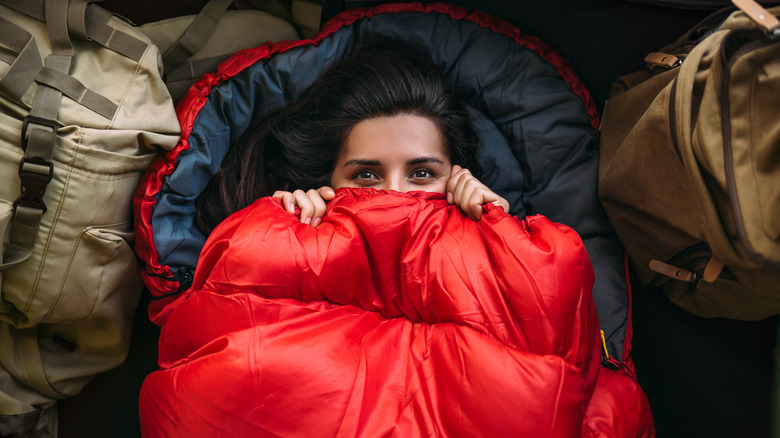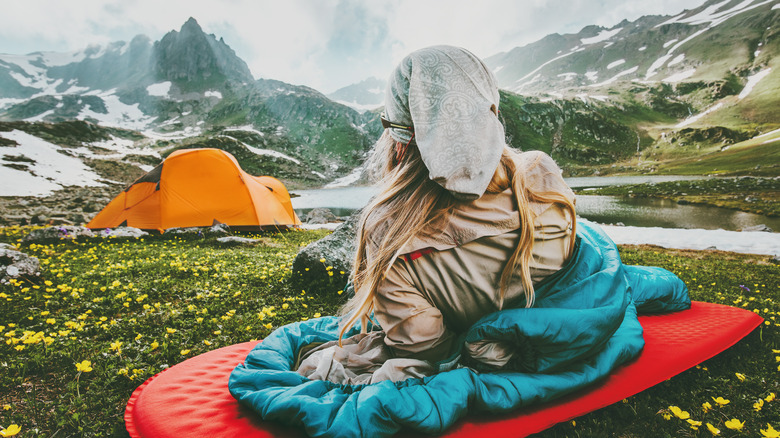Travel Guides Outdoor Adventures Camping
Lexi Kassler
At the end of a long day of hiking, it can be tempting to unroll your sleeping bag and hop directly inside to get some shut-eye. However, if you do this, you might find yourself battling the chills as you try to fall asleep.
Why does this happen? As it turns out, sleeping bags are made of an insulating material that functions a bit differently from a wool blanket or a sweater. The material, usually made of synthetic fiber or down, is actually made up of countless tiny air pockets. When fully expanded, these air pockets absorb your body heat, trapping it inside the material and keeping you warm throughout the night.
However, when you roll up your sleeping bag, you’re actually condensing the material and squishing together all these air pockets. When you roll it out again, it can take a while for the air pockets to re-expand. That’s why if you get into bed too soon, you might find your sleep interrupted by the shivers.
Properly prep your sleeping bag for restful sleep

Sotnikov Misha/Shutterstock
Being up all night fighting the cold is definitely not the way most people want to spend their evening, especially when getting good sleep is essential (like when you have a big day of hiking or outdoor activities ahead of you).
To get the most out of your sleeping bag, prep it correctly before finally crawling inside to sleep. When you unroll it, be sure to shake it out. This not only gets air into those little pockets in the sleeping bag fibers but will also clear out any stale smells from the night before. Let the sleeping bag fully decompress for about 30 minutes. You should do the same as you sit by your campfire and enjoy the surrounding nature.
If you really want to boost your sleep, do a little stretching and some light exercise before you get into your now perfectly prepared sleeping bag. This will help you stay limber for the next day of hiking and sleep better. In fact, multiple studies show that an increased body temperature followed by a slow cooling mimics our natural circadian rhythms and helps you stay asleep throughout the night.
Other sleeping bag tips and tricks to ensure a great night of sleep

everst/Shutterstock
Believe it or not, there are actually many ways you can use and store a sleeping bag incorrectly. However, there are some easy adjustments you can make to maximize your sleeping bag’s potential and keep it in good condition for longer.
For better sleep while camping, we do recommend a bit of exercise, but make sure you don’t break a sweat before getting in bed. The excess moisture can actually cause a cooling effect inside your bag instead of keeping you warm. Additionally, don’t wear too much clothing inside your sleeping bag. This will trap your body heat against you instead of letting it get trapped in those little air pockets, and keep your whole body evenly heated. Wear thin layers of wool clothing and place the rest of your clothes by your feet (as long as they’re not too stinky, of course).
To maintain your sleeping bag’s shelf life, keep all moisture away from it as much as possible. Moisture will break down your sleeping bag’s fibers over time and can even lead to mold and mildew. Storing your bag uncompressed can prevent a buildup of humidity inside the bag and also maintain its composition. If left compressed for too long, the all-important air pockets can break down and lose their ability to store your body heat.

